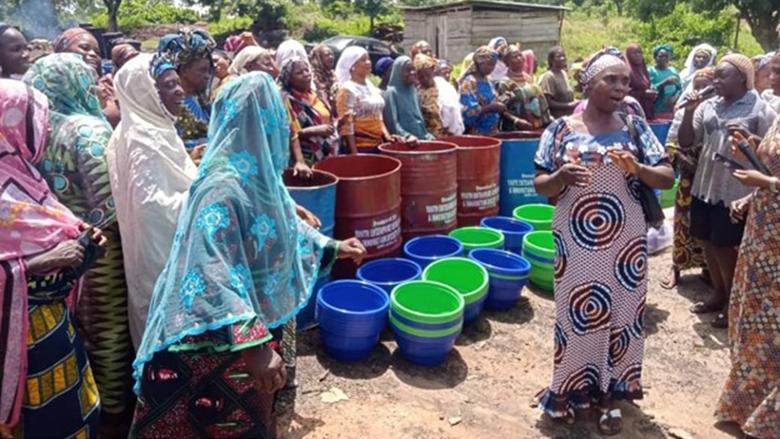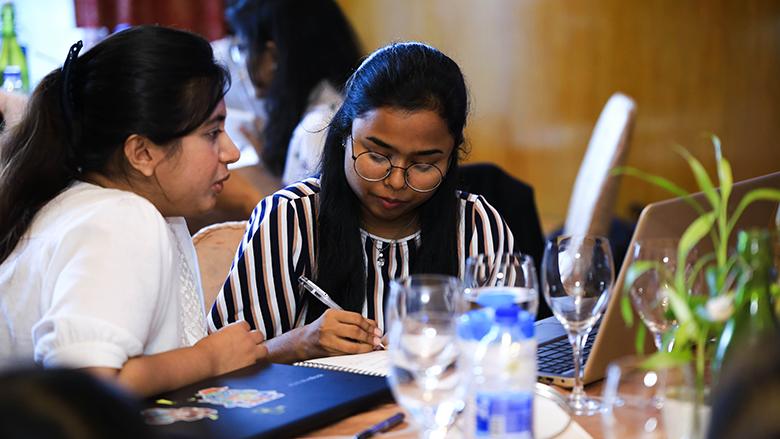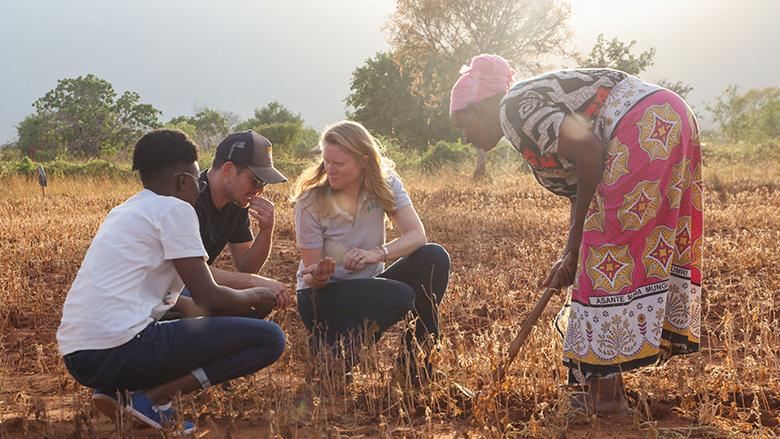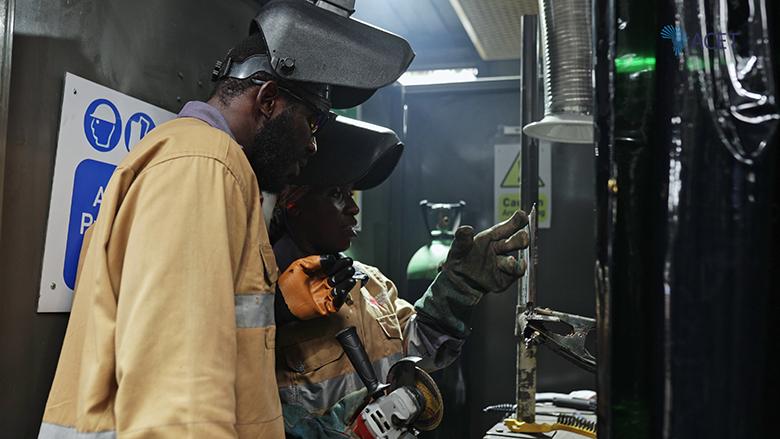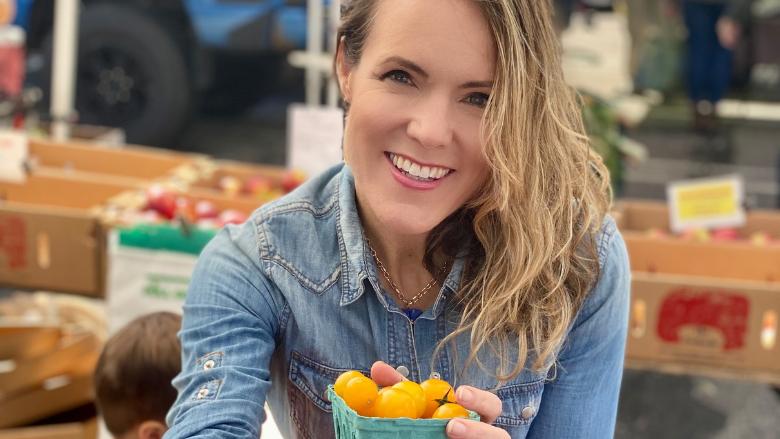[Abebe Adugna, World Bank] Thank you, Peter, for joining me. Despite years of effort, financial inclusion in Africa remains low—especially among women, young people, and marginalized communities. What are the main barriers holding back progress, and are there examples of partnerships that have helped move the needle?
[Peter Materu] Thank you, Abebe. —many rural areas still lack reliable access, and investment has been slow. Only about 30% of adults have smartphones, limiting access to digital payments, especially for women, who lag men by roughly ten percentage points.
We also need interoperable payment systems so users can move money easily across platforms and new players can compete. Traditional banking barriers persist too: collateral requirements exclude young people and low-income groups. We’re working to change that through risk-sharing facilities and digital credit solutions that make youth lending viable.
At the Mastercard Foundation, inclusion is central to our mission. Since 2018, we’ve committed about $3.4 billion, reaching over 25 million people and unlocking more than $700 million in private investment. We partner with banks like Equity and KCB in Kenya and Absa in Ghana to support young people lending without collateral. In Ethiopia, our partner Kifiya uses digital data to build credit histories, and similar work continues in Uganda with GnuGrid.
We also advance women’s financial inclusion through the Africa Growth Fund, which supports women-led investment funds—helping mobilize capital and change perceptions of Africa as an investment destination.
Finally, our Africa Catalytic Investment Facility (ACIF) supports growth-stage SMEs, complementing our work with smaller enterprises. By demonstrating that African businesses are competitive and investable, we also aim to shift the narrative about Africa’s markets and entrepreneurs. No single actor can solve this alone, but we hope our efforts inspire broader investment in inclusive finance.
[Abebe Adugna, World Bank] Your foundation has set an ambitious goal—enabling 30 million young Africans to access dignified work by 2030. That’s bold and inspiring. What’s your approach to achieving it, and are there scalable models emerging?
[Peter Materu] Yes, we made this commitment in 2018 to push ourselves beyond our comfort zone. So far, we’ve enabled over 19 million young people to access dignified work, and we’re on track for 30 million by 2030. But even that is a fraction of the challenge—by then, over 500 million young Africans will be seeking opportunities. We must act faster while the demographic window is still open.
We focus on three priorities.
First, education—particularly secondary education which we know to be a key pathway to work and technical-vocational training—must align with labor market needs.
Second, skills and employability. Many young people finish school but can’t transition into jobs. We partner with groups like the African Leadership Group to deliver short programs in areas such as cybersecurity, data systems, and AI, directly linking graduates to employers.
Third, moving from projects to programs. Dignified work isn’t a single intervention—it’s a journey from gaining skills to finding and advancing in work. We invest in institutions and address systemic barriers like policy gaps, limited market access, and outdated mindsets.
We also emphasize agency—helping young people believe in their capacity to shape their futures. For those from poor or rural backgrounds, that mindset shift can be transformative.
[Abebe Adugna, World Bank] You’ve emphasized education and skills, but even with talent, many economies lack firms able to hire or grow. Is the main challenge on the supply side—skills and readiness—or the demand side, meaning limited job opportunities?
[Peter Materu] Both are critical, and we try to address them together. We often say: meet young people where they are and travel the journey with them. That begins with relevant education and skilling.
Next is connecting young people to opportunities—linking training directly to employers or entrepreneurship. But the demand side is equally vital: only two or three of every ten young Africans entering adulthood find formal wage employment. So entrepreneurship becomes essential. Most of the 19 million young people we’ve supported found work through self-employment.
To make that sustainable, we partner with banks and use risk-sharing mechanisms so they can lend to young entrepreneurs without collateral. When financial institutions view young people as investable, the entire ecosystem grows—and that’s how jobs are created at scale.
[Abebe Adugna, World Bank] You’ve mentioned digital technology several times. With the digital and AI revolution reshaping the global economy, how do you see its promise and risks in Africa? And how can countries best leverage these tools?
[Peter Materu] I often say digital has become the fourth dimension of basic literacy—essential across all sectors. Whether in finance, agriculture, education, or the creative industries, digital technology is now foundational, and with AI, its importance keeps growing.
The main challenge remains infrastructure—especially in rural areas. Even where it exists, affordability is a barrier; high data and bandwidth costs keep many offline. We also need interoperable systems to connect users across platforms.
Ultimately, progress will depend on collaboration among governments, private actors, and development partners to ensure digital benefits reach everyone.
[Abebe Adugna, World Bank] Africa faces a complex development landscape—a growing population, limited jobs, rising debt, and declining aid. How can organizations like the Mastercard Foundation and the World Bank work together more effectively? Are policy or programming shifts needed?
[Peter Materu]
At the Mastercard Foundation, we aim to scale impact with agility and inclusion. But to meet Africa’s challenges, we need partners with shared purpose, which makes collaboration with the World Bank so valuable.
We’ve already worked together through CGAP, advancing digital payments and inclusion across Africa, and through EdTech, supporting entrepreneurs integrating digital tools into classrooms so young people build digital literacy early.
These partnerships have the potential to be deepened and scaled. With strong leadership and shared purpose, I’m confident we can achieve much more together.
[Abebe Adugna, World Bank] Thank you, Peter. We’d love to continue that conversation, especially around financial inclusion in Kenya, Ghana, and Ethiopia. Let’s plan a follow-up with our teams.
[Peter Materu] Absolutely—it would be a pleasure. I look forward to discussing not just what we can do together, but how. That’s where the real challenge—and opportunity—lies.


